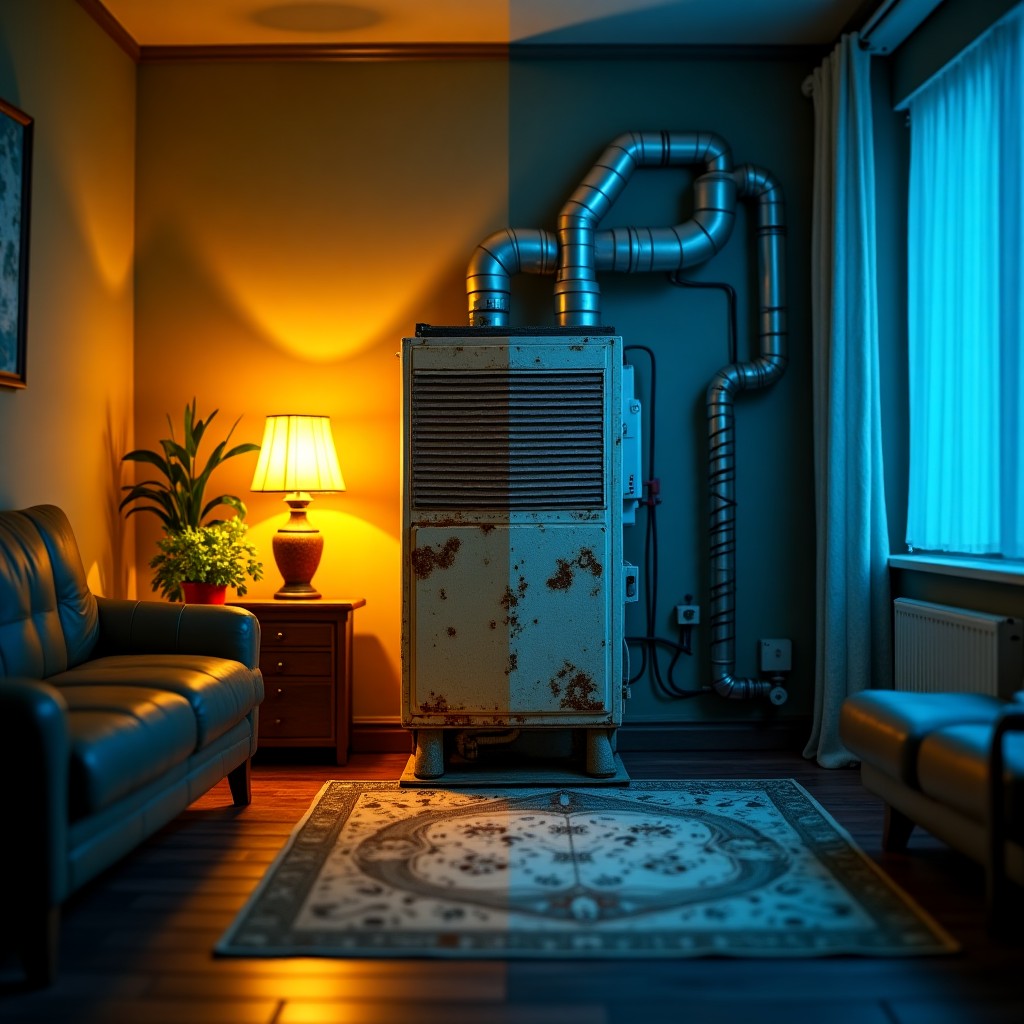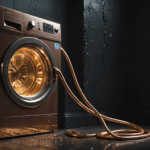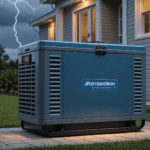Uneven heating or cooling in your home can significantly impact home comfort, often leaving some rooms much too warm while others remain uncomfortably chilly. To troubleshoot these issues effectively, it’s crucial to start by identifying the common causes of such temperature inconsistencies. Understanding these factors can help you decide on the most efficient course of action, whether it’s a DIY fix or requires professional intervention.
Firstly, consider the age and condition of your HVAC system. Older heating, ventilation, and air conditioning systems may struggle with efficiency due to outdated technology or wear and tear over the years, which could lead to areas of your home not receiving proper airflow. Regular maintenance and timely upgrades to your HVAC system can prevent these issues. If HVAC issues are suspected, keep an eye out for frequent cycling on and off, unusual noises, or higher-than-usual energy bills, as these can be indicators that your system isn’t performing optimally.
Another frequent cause of uneven temperature distribution is poor air balancing. This can occur when your ductwork doesn’t evenly distribute air throughout your home, often as a result of design flaws, blockages, or improper installation. Air balancing involves adjusting your HVAC system to ensure equal air flow over minimal pressure loss, helping to maintain consistent temperatures throughout different rooms.
Insulation also plays a critical role. Homes with inadequate insulation may struggle to maintain a consistent temperature, as heat can easily escape in the winter and infiltrate during the summer. Attics, walls, and basements are particularly prone to losing or gaining heat if not properly insulated, amplifying the workload on your HVAC system.
To highlight the comparison between external structural factors and internal system issues, consider the following table:
| Factor | Description | Possible Solutions |
| HVAC System | Outdated or poorly maintained systems | Regular maintenance, system upgrade |
| Air Ducts | Poor design or blockages | Air balancing, duct cleaning or redesign |
| Insulation | Insufficient or ineffective insulation | Improving insulation in key areas |
Consider the impact of external factors such as the orientation of your home and the presence of large windows which can create heat loss or gain, further contributing to uneven temperatures. Ensuring that windows are properly sealed and having suitable window treatments can mitigate these effects. By addressing these common causes, you can significantly enhance your home’s comfort and efficiency.
Evaluating your HVAC system’s performance
To ensure that your home’s HVAC system is performing optimally and contributing to consistent home comfort, you need to evaluate its current performance. This involves a few steps that will help you identify potential issues and make necessary adjustments or repairs.
1. Check the Thermostat Settings:
– Begin by ensuring that your thermostat is set to the desired temperature. It might seem simple, but incorrect settings can cause rooms to cool or heat unevenly.
– If you have a programmable thermostat, review the schedule to ensure it aligns with your daily routine and preferences.
– Verify that the thermostat is calibrated correctly. An uncalibrated thermostat can misread the temperature, leading to inappropriate heating or cooling.
2. Assess System Cycling:
– Monitor how often your HVAC system turns on and off. Short cycling can indicate issues like a thermostat problem or an HVAC unit that is too large for your home.
– Long, continuous cycles can suggest inefficiencies, possibly due to poor insulation or a system struggling to maintain set temperatures.
3. Listen for Unusual Noises:
– Pay attention to any unusual noises coming from your HVAC unit, such as banging, grinding, or rattling sounds. These can indicate mechanical issues, loose parts, or debris within the system.
4. Inspect for Uneven Airflow:
– Check all registers and vents in your home to ensure they are open and unobstructed. Blockages can cause some areas to receive less airflow.
– Place a small piece of tissue paper near the vents to test the air pressure and flow; it should move consistently among all vents.
5. Observe Temperature Consistency:
– Use a room thermometer to measure the temperature in different areas of your home. Record these temperatures at different times of the day to spot patterns of inconsistency.
– Identify rooms that are frequently too warm or too cold compared to others and note any changes after making adjustments to your HVAC system.
By systematically evaluating your HVAC system’s performance, you can identify whether the system itself is at the core of your home’s uneven heating or cooling. Address any issues promptly, as maintaining efficient performance not only enhances air balancing and home comfort but can also reduce energy costs over time.
Checking and sealing air leaks
Air leaks are a prevalent issue that can undermine the efficiency of your HVAC system, leading to uncomfortable temperature imbalances throughout your home. Locating and sealing these leaks can significantly enhance home comfort and reduce the workload on your HVAC system, thus promoting better air balancing.
Begin by checking for drafts around common problem areas, such as windows, doors, and any entry points for utility lines. An effective method to detect leaks is by using the “smoke test.” Hold a lit incense stick or candle close to potential leakage points and observe if the smoke wavers or pulls in a specific direction, which indicates air movement through a gap.
Windows can be a major source of heat loss or gain, causing the HVAC system to work harder, leading to fluctuating indoor temperatures. Ensure they are properly sealed by checking the condition of caulking and weather strips. Replace or repair any worn-out materials to establish a more airtight seal, reducing the flow of unconditioned air.
Doors should also be examined for their ability to form a tight seal when closed. Installing draft stoppers or door sweeps can prevent air from escaping underneath, a simple yet effective solution to maintain constant indoor temperatures.
Furthermore, pay attention to less obvious areas like recessed light fixtures, attic hatches, and basements where pipes and ductwork enter the home. Gaps around these fixtures can be sealed with weather-stripping tape or expanding foam. Attic hatches, in particular, should be insulated and sealed tightly to prevent warm air from escaping in the winters or cool air from leaking in the summers.
By addressing and sealing air leaks, you significantly boost the efficiency of your HVAC system, leading to improved air balancing. This is because the conditioned air is retained within the living spaces, reducing the frequency and duration of HVAC system cycling. As a result, not only do you achieve a more consistent and comfortable indoor atmosphere, but you also see a decrease in energy consumption and utility costs over time.
Emphasizing the correction of air leaks empowers homeowners to maintain home comfort without over-reliance on their HVAC systems, helping to strike a balance between energy efficiency and indoor climate control.
Balancing airflow through ductwork
To achieve more consistent temperatures throughout your home, it’s crucial to properly balance airflow through the ductwork. Imbalanced airflow is a common culprit behind uneven heating or cooling, often making some rooms feel overly warm while others remain too cool. Addressing this issue involves a methodical approach to adjusting the air distribution within your duct system to ensure every area gets its fair share of heated or cooled air.
Start by assessing the current airflow from each vent or register. You can do this by holding a piece of tissue paper a few inches from the vent; it should flutter evenly among all vents if the airflow is balanced. If one or more rooms routinely feel different in temperature from the rest of the house, consider adjusting the dampers in your ductwork. Dampers are small, adjustable vents within the ducts that control the flow of air. By opening or closing these dampers, you can redirect air to where it’s needed most, enhancing overall home comfort.
It’s also wise to check for blockages in your ductwork, as these can obstruct air distribution and exacerbate temperature disparities. Ducts can become blocked or constricted by dust and debris over time, reducing the overall efficiency of the HVAC system and leading to uneven temperatures. Regularly inspecting and cleaning your duct system can prevent such blockages and optimize performance.
Another factor that can disturb air balancing is furniture or obstructions placed in front of vents. Ensure that all vents and registers are clear of obstructions to allow for maximum airflow. Even something as simple as a couch or drapes blocking a vent can disrupt the air distribution, leading to uneven heating or cooling in your home.
In some cases, the ductwork may not have been originally configured to meet the current layout of your home, particularly if you’ve had renovations or have adjusted living spaces. Consulting with a professional can provide specialized insight into whether your system requires redesign or modification for optimal airflow and air balancing within your ductwork.
The intricate relationship between your HVAC system and ductwork is pivotal in maintaining consistent temperatures. Poor air balancing can lead to increased HVAC issues, causing the system to work harder and less efficiently. By taking the time to adjust and refine the airflow through your home, you can significantly enhance home comfort and energy efficiency, reducing the reliance on your HVAC system to correct temperature imbalances.
Considering professional assessment and solutions
If you’ve exhausted all DIY troubleshooting measures and are still facing issues with uneven heating or cooling in your home, it might be time to consider a professional assessment. HVAC specialists have the expertise and tools to thoroughly evaluate your system and identify underlying problems that might not be immediately visible. Their professional eye can catch faults such as improperly installed ductwork or unbalanced airflow that can significantly affect home comfort.
A professional assessment typically begins with a comprehensive inspection of your entire HVAC system, including the furnace, air conditioning unit, ductwork, and ventilation. Technicians use specialized equipment, like manometers and thermal imaging cameras, to gauge airflow and pinpoint inefficiencies or leaks that might contribute to uneven temperatures. They also assess the unit’s overall health, checking for issues like a compromised condenser coil or an inefficient blower motor that might be hindering optimal performance.
After pinpointing the issues, HVAC professionals will recommend solutions tailored to your specific needs and circumstances. Solutions might include reconfiguring or repairing ductwork, recalibrating your system, or even upgrading specific components like thermostats or outdated HVAC units. In some cases, a complete system overhaul might be necessary, especially if your system is outdated and struggling with performance deficits despite repairs.
Moreover, professionals can provide valuable advice on enhancing air balancing through advanced solutions like zoning systems. These systems segment your home into different zones, each with its own thermostat, allowing you to control the temperature in each area independently. Zoning can greatly improve comfort and efficiency by ensuring air is distributed according to the specific needs and usage of each zone.
In addition to direct fixes, professionals can offer insights into preventative maintenance strategies to avoid future HVAC issues. This includes regular system check-ups, duct cleaning, and filter replacements, all of which contribute to maintaining consistent home comfort.
By opting for a professional evaluation, you not only stand a better chance of resolving current air balancing and distribution issues but also invest in long-term solutions that sustain a comfortable and efficient home climate.










